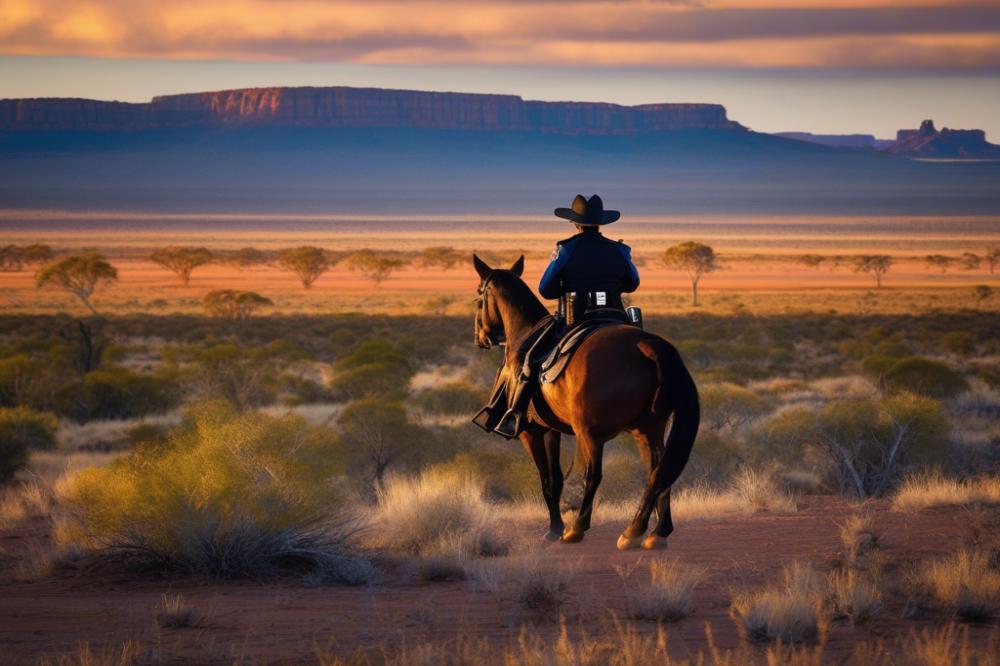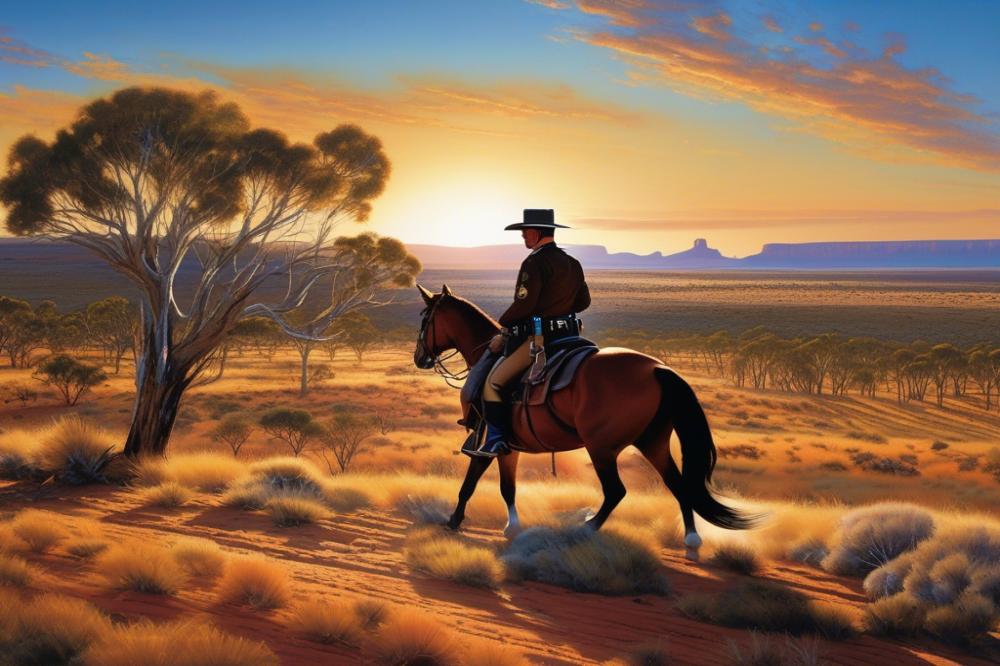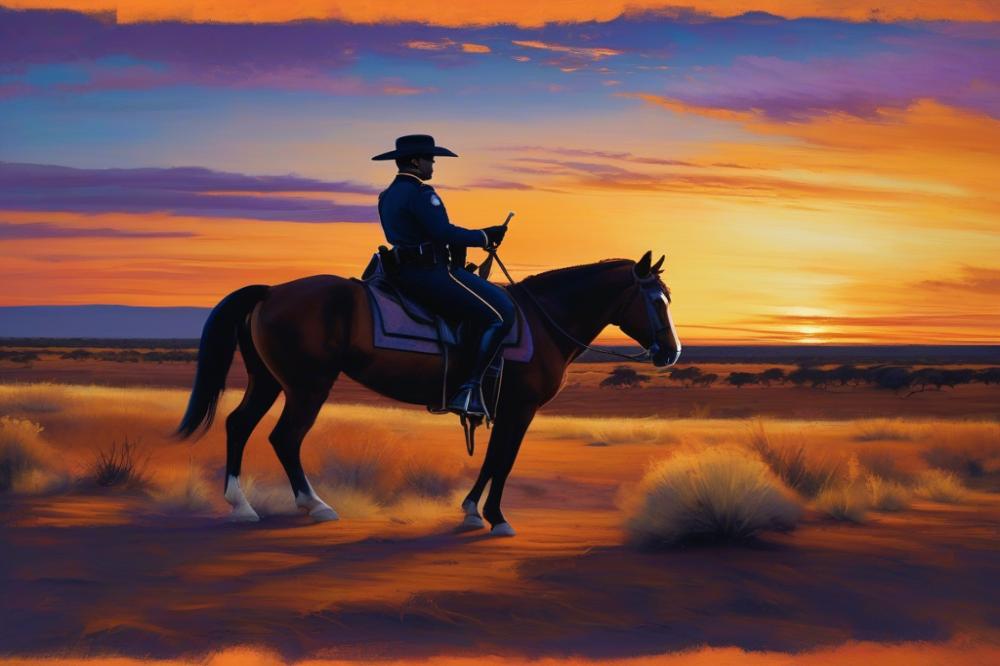Overview of mounted units in Australia
In the vast expanse of Australia’s outback, mounted units play a vital role. These groups, often comprising police forces, display a unique bond between riders and their horses. Police horses transcend simple law enforcement tools; they serve as symbols of community trust and connection.
When it comes to public safety, their significance cannot be overstated. Mounted patrols offer a reassuring presence in rural areas, where traditional methods of law enforcement may fall short. These noble steeds are not only used for crowd control during events but also help maintain calm in tense situations. Citizens often feel more at ease in the company of police on horseback, fostering a sense of safety and accessibility.
Moreover, the relationship between officers and horses strengthens community ties. Officers often interact closely with local residents. This connection helps build trust in a way that a patrol car cannot. When a police officer on horseback approaches, there is a genuine opportunity for conversation. Such interactions go a long way in bridging gaps between law enforcement and the communities they serve.
Overall, police horses in the outback embody more than just a means to an end. They represent a partnership aimed at ensuring public safety and promoting a peaceful environment. Through the bond shared by officers and their steeds, a deeper understanding of community needs often emerges.
History of Mounted Units in Australia

Origins of Mounted Police in Australia
Mounted police in Australia date back to the early 19th century. The first units were established in New South Wales in 1825. Their primary purpose was to maintain order in the rapidly growing colonies. Police relied on horses to patrol vast stretches of land. This was crucial for managing communities and dealing with conflicts. As settlers expanded into the bush, the need for these units grew. They played a vital role in enforcing law and order in remote areas.
Evolution of Their Roles and Responsibilities
Over time, the duties of mounted units evolved significantly. Initially, their focus was on crime prevention and public safety. However, they also became involved in various types of work. This included crowd control during major events or public disturbances. Modern units often participate in ceremonies, showcasing their important cultural role. Today, they’re called upon for search and rescue missions. Their ability to traverse challenging landscapes makes them invaluable in such situations.
Cultural Heritage and Traditions Associated with Mounted Patrols
Traditions around mounted patrols run deep in Australian culture. Horses symbolize a bond between humans and nature. Many communities celebrate their historical significance through festivals. These events often highlight the skills of both horse and rider. Storytelling also plays a key part in honoring these units. Tales of bravery and adventure are shared across generations. The connection to the land and its history remains strong. Mounted patrols continue to remind us of Australia’s rich heritage.
Training and Care of Police Horses

Selection of Trusted Steeds for Mounted Units
Choosing the right horse for police work is a critical task. Not every horse can handle the demands of urban environments or public events. Breeds known for their temperament, strength, and agility are often the best candidates. Officers look for animals that exhibit calmness under pressure and have a sturdy build. Various characteristics also matter, such as age and training background. Horses typically between five and ten years old are preferred, as they have enough experience but still plenty of energy.
Training Processes for Police Horses
Training police horses is a comprehensive process. It involves both groundwork and riding. New recruits begin with exercises that build trust between horse and rider. Desensitization is important, too. This helps the horse adjust to loud noises and crowds. When ready, horses undergo mounted patrol training. Riding through busy streets simulates real-life scenarios. Officers teach horses to follow commands and respond quickly. Routine practice is essential. Instructors emphasize control and communication as keys to success.
Maintaining Equestrian Health and Welfare
Caring for police horses extends beyond training. Health checks are routine, with veterinarians ensuring each horse remains in peak condition. Regular exercise keeps them fit, while adequate rest helps recover from work. Proper nutrition is crucial, too. Horses need a balanced diet rich in vitamins and minerals to perform well. Grooming plays a significant role in their care. Brushing helps to keep skin healthy and also serves to strengthen the bond between horse and rider. Attention to mental health is vital. Social interactions with other horses reduce stress levels. Overall, each horse’s welfare is a top priority for the force.
Functions of Mounted Units in the Outback
In rural Australia, law enforcement duties take a different form. Officers on horseback can access areas that vehicles simply cannot. They patrol vast stretches of land, tackling issues like illegal hunting and trespassing. Visibility is key in these regions, and horses allow for a more nimble presence. Maintaining peace and order is essential, especially in remote communities.
Wildlife conservation often relies on these riders. They monitor populations of native species, checking for signs of distress or disruption. Ranching operations also benefit from their expertise. Cattle must be managed effectively, and mounted patrols help in rounding up livestock. Presence on horseback promotes a balance between agricultural needs and protecting the ecosystem. Responsible practices ensure that both land and animals thrive.
Community engagement forms another significant aspect of their work. Patrols create opportunities for interaction. Residents feel more comfortable approaching officers on horseback. This builds trust and fosters dialogue. Demonstrating a commitment to safety, the mounted units participate in local events too. Schools, festivals, and fairs often feature mounted displays, drawing in crowds. These encounters strengthen relationships between law enforcement and community members.
Challenges Faced by Mounted Units
The Australian outback presents significant environmental challenges for those who patrol it on horseback. Vast stretches of dry land, unpredictable weather, and limited access to water sources can test the endurance of both riders and steeds. During hot summer days, temperatures can soar, affecting horses’ hydration and energy levels. Moreover, the rugged terrain can often be treacherous, posing risks for accidents or injuries.
Safety remains a top priority for officers and their horses. While these animals are exceptionally trained, they can still be uneasy in unfamiliar situations. Factors such as noise, wildlife, or even sudden weather changes can startle them, leading to potential dangers. Officers must always be vigilant, ready to respond to any unexpected incidents that may arise during patrols.
Moreover, adapting to new technologies and methods provides both opportunities and challenges. Innovations like drones and GPS technology are becoming more common. These tools can enhance surveillance, but they also require training and adjustment. It may be challenging for some officers to balance traditional mounted practices with modern equipment. Finding that balance is crucial in ensuring effective operations in the outback.
The Future of Mounted Units
As society evolves, law enforcement must also adapt. Trends in policing are changing due to technology and community needs. Mounted officers still play a vital role, but their duties are transforming. Many departments are recognizing the value of equestrian skills combined with modern practices. This integration can improve community engagement and visibility.
Trends in Law Enforcement and Equestrian Practices
Equestrian methods are facing new challenges and innovations. Officers now use advanced communication devices while on horseback. This technology allows for quick responses in diverse situations. Public perception of mounted patrols is changing, too. People appreciate officers on horseback as approachable and friendly. These mounts often help bridge gaps between law enforcement and the community.
Integrating Mounted Units with Modern Policing
Fusing traditional mounted work with contemporary approaches proves beneficial. Officers can utilize social media to connect with the public. They can showcase events or share moments that highlight community ties. Using horses during events also promotes a sense of safety. When people see officers on horseback, they often feel more secure.
Preserving the Legacy of Mounted Patrols for Future Generations
Keeping the spirit of mounted patrols alive is essential. Future programs should emphasize training and knowledge transfer. Young recruits can learn from experienced riders. Museums and educational initiatives may play a role in this too. Storytelling is an effective way to share the history of these units. Such efforts ensure that the stories of these brave officers and their noble steeds continue to inspire.
Final Thoughts
Significance of Mounted Units in Australia
From their historical roots to modern law enforcement, mounted units have served vital roles in Australia. These units contribute to community engagement and build trust between police and citizens. They are often seen at public events, bridging gaps in communication. The sight of officers on horseback reminds many of a simpler time, evoking nostalgia while performing crucial duties.
The Ongoing Role of Horses in Law Enforcement
Horses continue to be an essential part of law enforcement strategies. They provide unique advantages, such as greater visibility in crowds and access to areas that vehicles cannot reach. Additionally, the calm demeanor of horses can help ease tensions during public interactions. Officers frequently rely on their trusty steeds to patrol large events or challenging terrains, particularly in rural settings like the outback.
Bond Between Officers and Their Steeds
The relationship between riders and their horses goes beyond mere utility. It’s built on mutual respect and trust. Officers spend countless hours training and bonding with their animals, ensuring they are well-prepared for any situation. This connection not only enhances performance but also fosters a sense of companionship. Both horse and rider share an unspoken understanding, forming a partnership that is crucial for effective policing.
The future of mounted law enforcement looks bright. With ongoing training and community support, these units will continue to thrive, highlighting the importance of cooperation between humans and horses. In Australia, the spirit of the outback lives on in these timeless partnerships.



